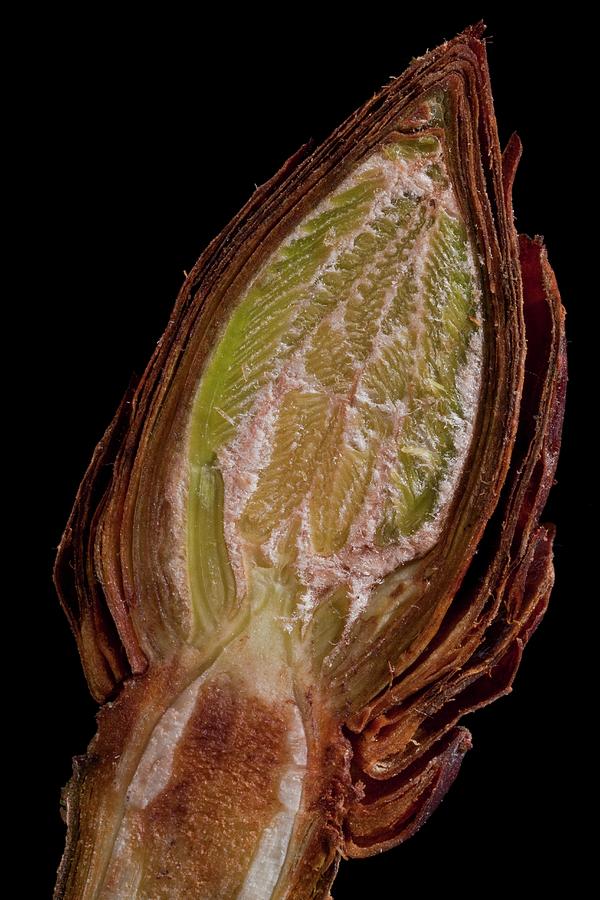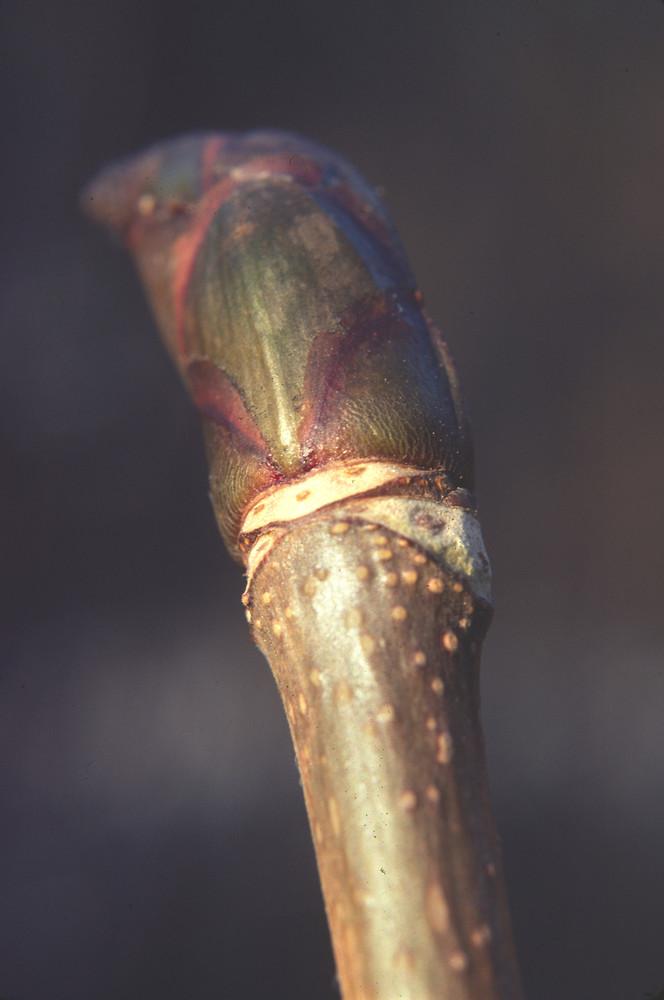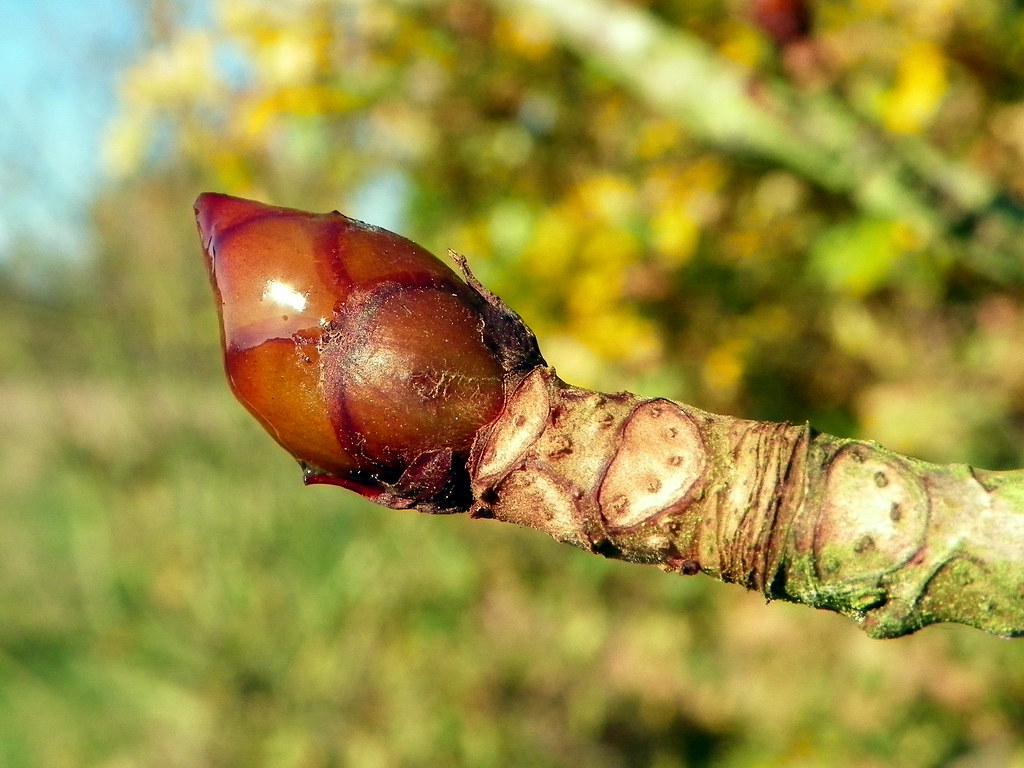
Aesculus hippocastanum (Horse Chestnut) Minnesota Wildflowers
See the Showy, loose to dense, rounded to semi-pyramidal branching clusters 6 to 10+ inches long at branch tips. Flowers are intermixed staminate (male), pistillate (female) and perfect (both male and female parts), 1 to 1¼ inches across with 4 or 5 petals.

Horse Chestnut (Aesculus hippocastanum) young fruit close up June
Environmental Characteristics. Light: Full sun Hardy To Zone: 4a Soil Ph: Can tolerate acid to alkaline soil (pH 5.0 to 8.0) Environmental Other: full sun or light shade; avoid extremely dry situations Moisture Tolerance: Consistently moist, well-drained soil; Occasional periods of dry soil See graphic below

Aesculus Hippocastanum Leaf Bud Photograph by Pascal Goetgheluck
Habitat Anthropogenic (man-made or disturbed habitats ), forest edges Characteristics Habitat terrestrial New England state Connecticut Maine Massachusetts Vermont Growth form the plant is a tree Leaf type the leaf blade is compound (i.e., made up of two or more discrete leaflets Leaves per node there are two leaves per node along the stem

Aesculus hippocastanum / Sapindaceae / MM / tok Chestnut Bud, White
Inflorescence glabrous or matted ferruginous villous and shortly whitish tomentose (whitish hairs mostly on pedicels); peduncle 2.5-5 cm; thyrse conic or cylindric-conic, 10-30 cm, 6-10 cm wide at base; branches 2.5-5 cm, 4-12-flowered; pedicels 3-6 mm. Calyx 5-6 mm, abaxially tomentose. Petals 4 or 5, white, with red spots and a yellow (later.

Aesculus hippocastanum (horsechestnut) Go Botany
Overall Flower Structure Bark Leaf Bud Bark Mature Trunk Bud Winter Habit View Fruiting and Flowering Observations 4 Aesculus hippocastanum 'Baumannii' found Powered by Esri Building Map. View Individual Plant List Other Plants Like This Aesculus (Horsechestnut Buckeye)

Aesculus hippocastanum buds emerging Cactus Plants, Bud, Garden Design
Over 90% Of All Products On eBay Are Brand New. Big Brands, Top Retailers. Great Prices On Millions Of Items. Get It On eBay.

Aesculus hippocastanum (horsechestnut) Go Botany
Commonly referred to as 'sticky buds', they are extremely sticky - a feature that helps to prevent damage by small insects, many of which get trapped on the gluey surface of the buds. The distinctive palmate leaves usually have five or seven leaflets . Sticky buds in springtime . Young leaves. Aesculus hippocastaneum blossom
Trees of Santa Cruz County Aesculus hippocastanum Horse Chestnut
Description Chestnut / Horse chestnut Growth The horse chestnut can grow up to 25 meters (85 ft) high. It has a broad and spreading crown with a low crown base. Buds The buds of the chestnut are large, ovate pointed, green-brown and often sticky. Underneath the buds there are noticeably large leaf scars. Bark
commom horse chestnut Aesculus hippocastanum Photos, Diagrams & Topos
Aesculus hippocastanum is a large tree, growing to about 39 metres (128 ft) tall [9] with a domed crown of stout branches. On old trees, the outer branches are often pendulous with curled-up tips.

Aesculus hippocastanum Chestnut Mail Order Trees
The Horse Chestnut, or aesculus hippocastanum, is a large deciduous tree that can reach heights of 30 - 40m and can have a branch spread almost as wide.. Buds: The large leaf and flower buds of Horse Chestnut are protected by a dark red, sticky coating, which melts with the beginning of warm weather to reveal flowers and leaves.

Horsechestnut (Aesculus hippocastanum) bud A sticky, red … Flickr
Horse chestnut, or Aesculus hippocastanum, is a tree native to the Balkan Peninsula. Extract from the horse chestnut seed is a popular dietary supplement commonly used to improve vein health.

Aesculus hippocastanum 'Baumannii' from NVK Nurseries
Aesculus hippocastanum Common name: Horsechestnut Pronunciation: ES-ku-lus hip-o-kas-TA-num Family: Sapindaceae, Hippocastanaceae Genus: Aesculus Type: Broadleaf Native to (or naturalized in) Oregon: No Broadleaf deciduous tree, 50-75 ft (15-23 m), upright, oval.

There are not many trees with magnificent blooms like the horse
Aesculus hippocastanum (horse chestnut tree or 'conker tree') is a large-growing deciduous tree with hard, rounded, shiny dark brown fruits, known as conkers. It has large, flat leaves up to 30cm long, made up of five to seven leaflets.

Horse Chestnut (Aesculus hippocastanum) bud close up December 2017
Aesculus hippocastanum L. (horse chestnut) is a Paleogene relict species endemic to small restricted regions of the Balkan Peninsula. often spiral sheets. Young branches are covered in reddish-brown wooly hairs, while mature ones are glabrous. The buds are up to 2.5-5 cm large, shiny, and sticky due to the resinous substance.

Buds on Horse Chestnut tree, Aesculus hippocastanum, known as sticky
A quantitative procedure was developed for determining total flavonoids in horse chestnut buds ( Aesculus hippocastanum L.) using differential spectrophotometry at 422 nm and recalculation as rhamnocitrin or 7- O -methylkaempferol (3,5,4′-trihydroxy-7-methoxyflavone), the dominant flavonoid in this raw material.
Trees of Santa Cruz County Aesculus hippocastanum Horse Chestnut
The buds of horse chestnut (Aesculus hippocastanum L., Hippocastanaceae family) is a new promising species of medicinal plant raw material. The prospect of studying the buds of this plant is due.